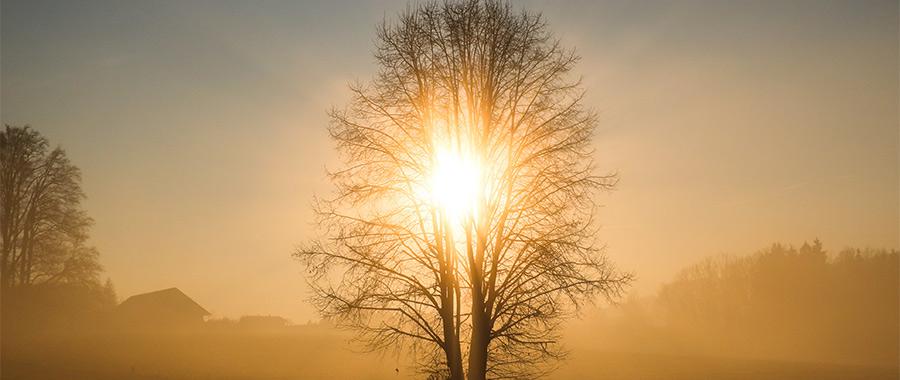In the exploration of Bahá’í teachings, one might encounter an array of concepts that elucidate the intricate relationship between nature and humanity. The metaphor of dead trees serves as a poignant illustration, offering profound insights into the principles of this faith. The lessons derived from these once-vibrant life forms embody fundamental Bahá’í precepts, prompting us to reconsider our perspectives on legacy, impermanence, and community. This article endeavors to unpack the implications of these teachings, elaborating on how they invite individuals to shift their understanding of existence.
The essence of Bahá’í philosophy is deeply rooted in the interconnectedness of all beings. Just as a tree stands tall, influencing its surroundings, so do the actions of individuals ripple through the community and beyond. In this context, a dead tree can symbolize not just loss but also the cyclic nature of life and death, reinforcing the idea that endings can be transformative beginnings. This cyclical perspective is essential in Bahá’í teachings, where the concept of progress is not linear but rather a continual evolution influenced by both the living and the departed.
Firstly, the notion of impermanence forms a cornerstone of spiritual contemplation in Bahá’í beliefs. Dead trees remind us of the transient nature of existence—an acknowledgment that every life, no matter how vibrant, will eventually yield to the passage of time. This reality is likened to the human condition where individuals, too, must grapple with the inevitability of mortality. In recognizing this, adherents are encouraged to cultivate a deeper appreciation for the present moment and live in accordance with principles that transcend temporal concerns.
Moreover, the transformation of dead trees into nutrient-rich soil provides a striking metaphor for personal and communal growth. In the Bahá’í framework, individuals are called to contribute positively to society, akin to the way decaying wood supports new life. This notion emphasizes the importance of service to humanity, encouraging individuals not to withhold their contributions posthumously but to embed their legacies into the fabric of future generations. The idea that service to others enriches the community reflects the profound interconnectedness celebrated within Bahá’í teachings.
Interconnectedness also extends to the treatment of nature itself. The Bahá’í Faith places significant emphasis on environmental stewardship. Dead trees, far from being seen as obsolete, serve as potent reminders of the responsibilities all humans carry towards the planet. The declining health of natural ecosystems speaks to broader spiritual and ethical obligations; a healthy environment is intrinsic to the well-being of all. Bahá’í teachings advocate for sustainable practices, encouraging individuals to view themselves as custodians of earth, thus fostering a sense of accountability for one’s actions.
Furthermore, the process of decomposition and regeneration embodied by dead trees invites reflection on the concept of sacrifice. In Bahá’í discourse, sacrifice holds great significance—a voluntary relinquishment of personal desires for the greater good. Much like dead trees that decompose to nurture the soil, individuals are urged to engage in acts of selflessness, fostering growth and unity. This principle highlights the transformative power of giving, where the act of letting go can produce fertile ground for communal flourishing and individual enlightenment.
The metaphor of dead trees also extends to the idea of resilience. A fallen tree may no longer stand upright, yet it continues to play a crucial role in the ecosystem. In Bahá’í teachings, resilience is intrinsic to the human spirit; struggles and setbacks can yield strength and renewal. By recognizing our own vulnerabilities, we can cultivate a fortitude likened to these trees that, even in death, contribute significantly to life. This perspective encourages individuals to embrace challenges as opportunities for growth, aligning with the Bahá’í principle of learning through adversity.
Additionally, the collective lessons derived from dead trees echo the concept of unity, central to Bahá’í belief. Each tree, although unique in its form and life cycle, is part of a larger network that supports the ecosystem’s health. Such unity reminds adherents of the importance of diversity within communities. The Bahá’í teachings celebrate the myriad ways in which individuals can contribute to society, embodying the idea that every person, regardless of background, plays a vital role in the tapestry of life. This recognition fosters a spirit of collaboration and mutual respect, which is essential for advancing societal progress.
As we delve deeper into the teachings linked to dead trees, it becomes clear that their symbolism is multifaceted and profound. They compel individuals to transcend superficial understandings of existence, urging a holistic view that marries the spiritual with the environmental. The principles derived from this contemplation—impermanence, interdependence, sacrifice, resilience, and unity—offer a comprehensive paradigm for navigating both personal and communal challenges.
In conclusion, the lessons imparted by dead trees encapsulate some of the most significant Bahá’í teachings. They invite individuals to rethink their position in the universe, sparking curiosity and prompting a shift in perspective that values regeneration, unity, and purpose. Much like the cycle of nature itself, these principles offer nourishment for the soul, reiterating that every life, in its myriad forms—whether it stands tall or lies upon the ground—holds the power to inspire and transform. Adopting these insights into everyday practice can yield profound personal growth, fostering communities that are resilient, compassionate, and interconnected.
